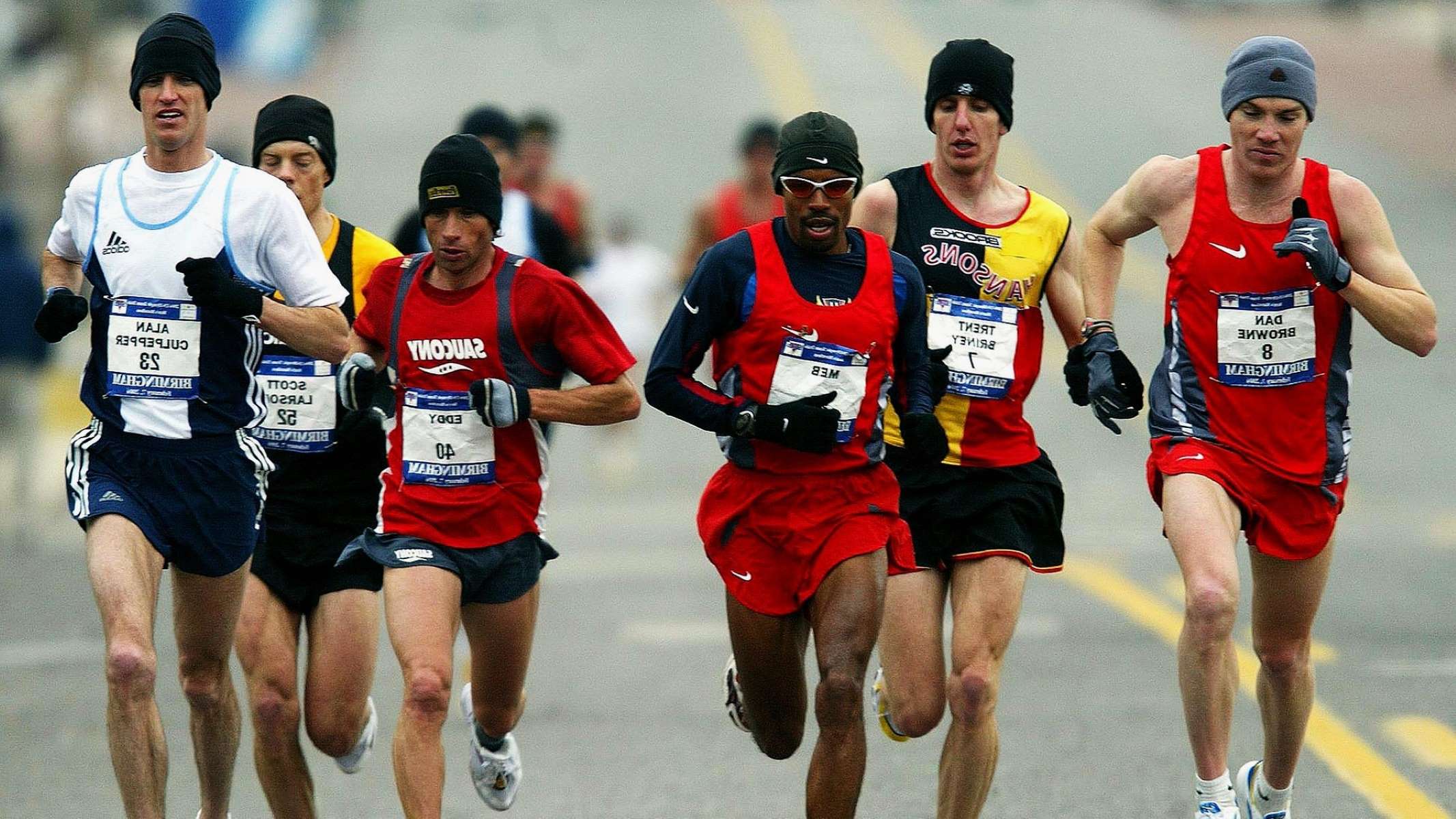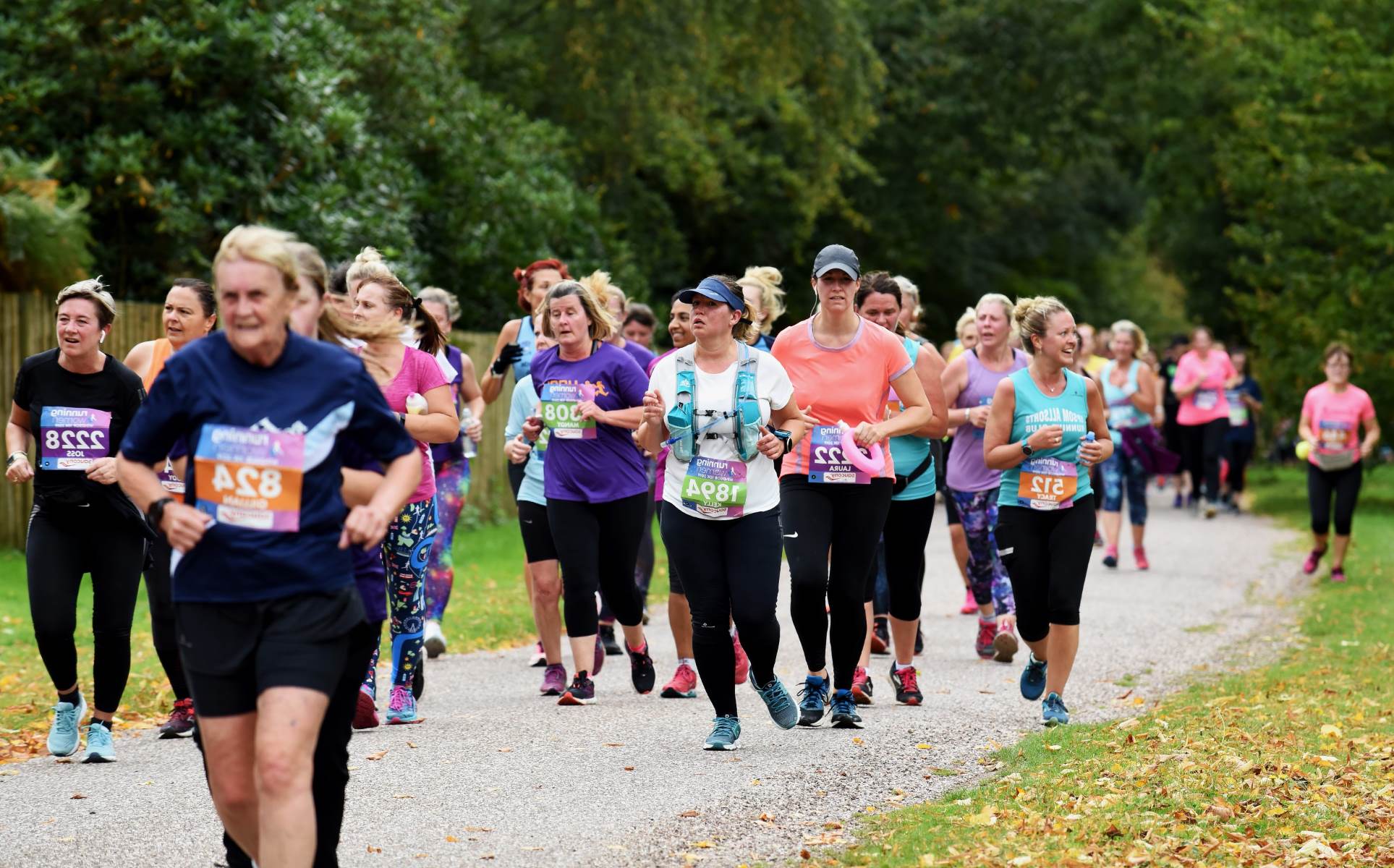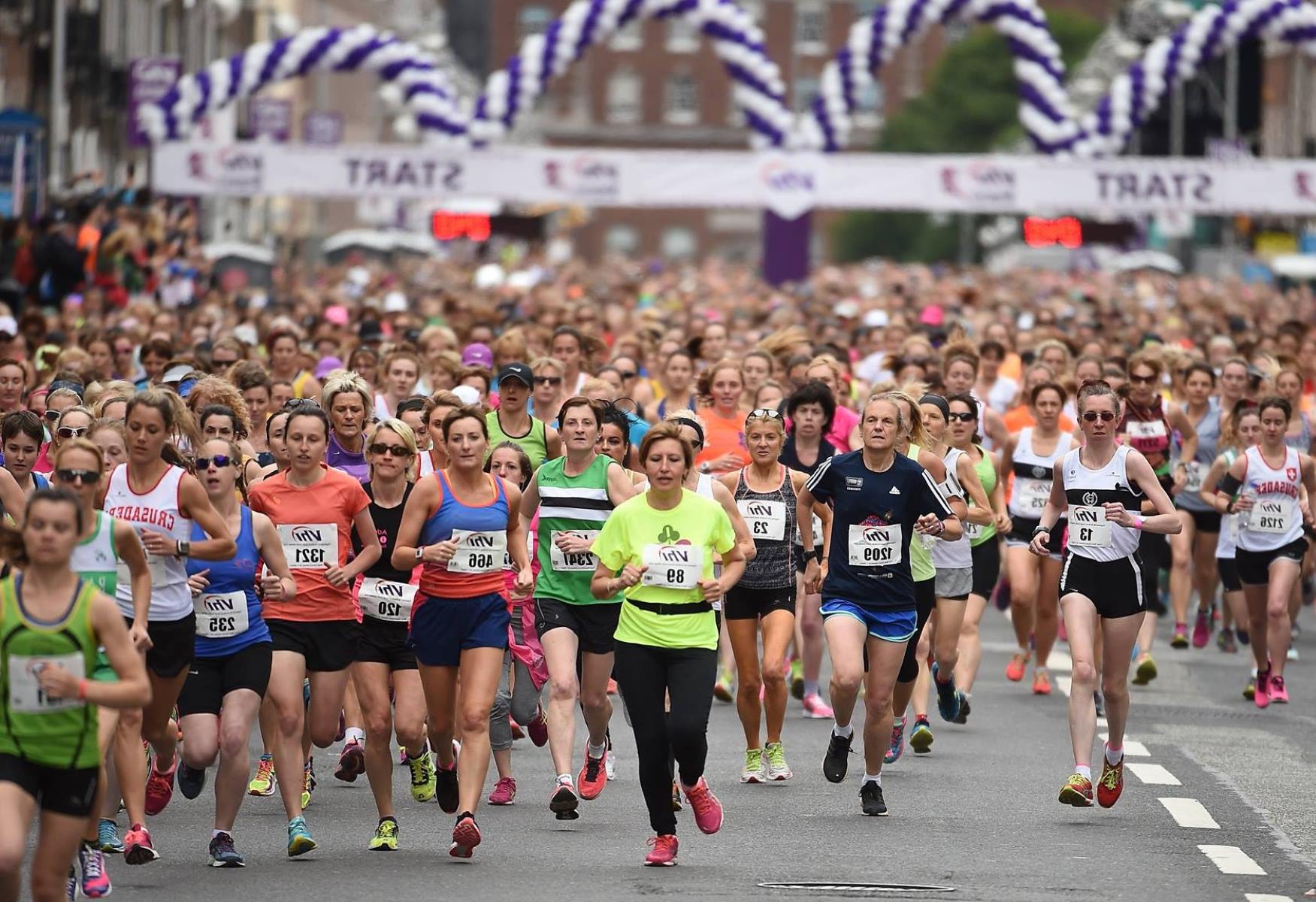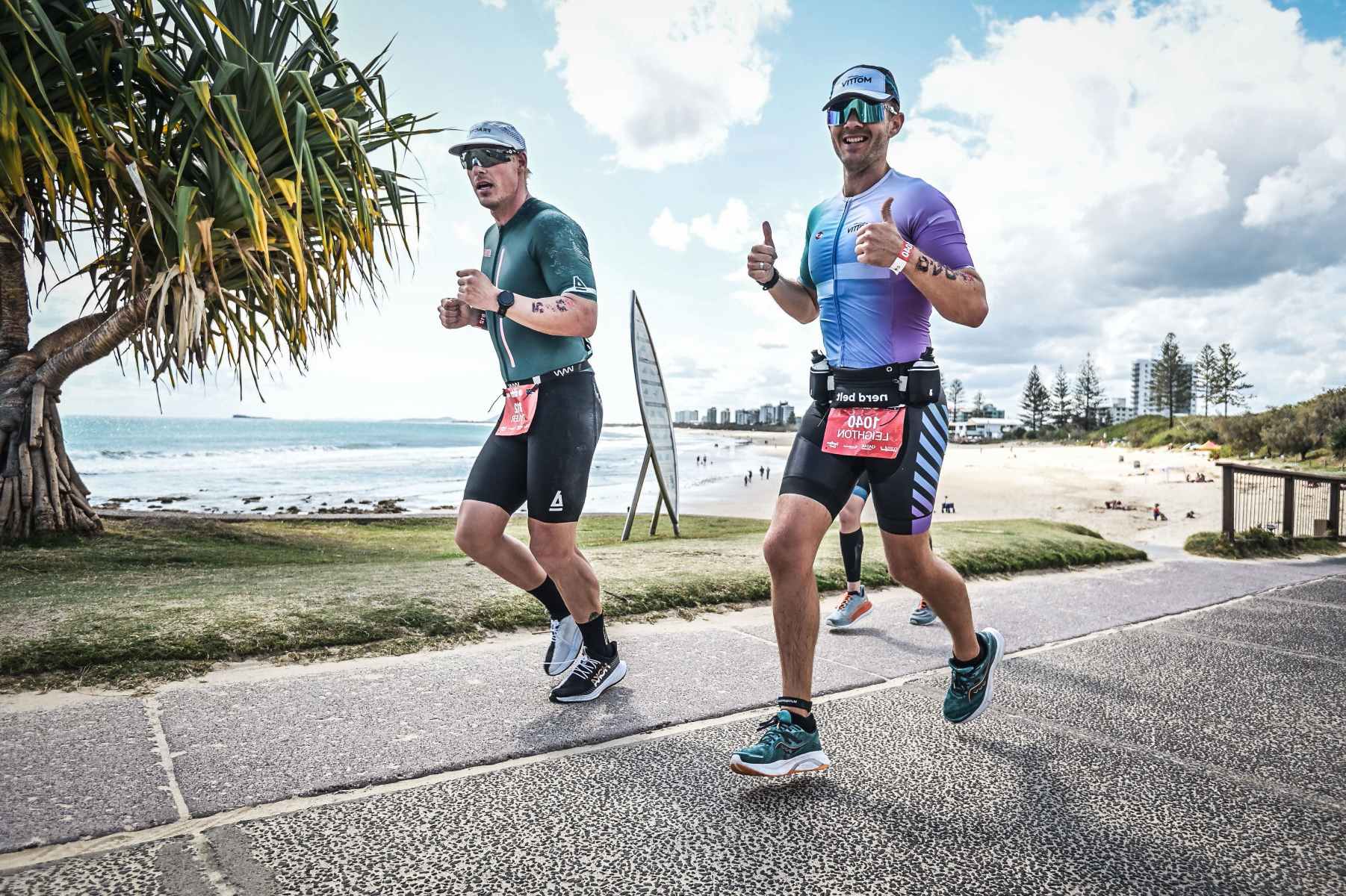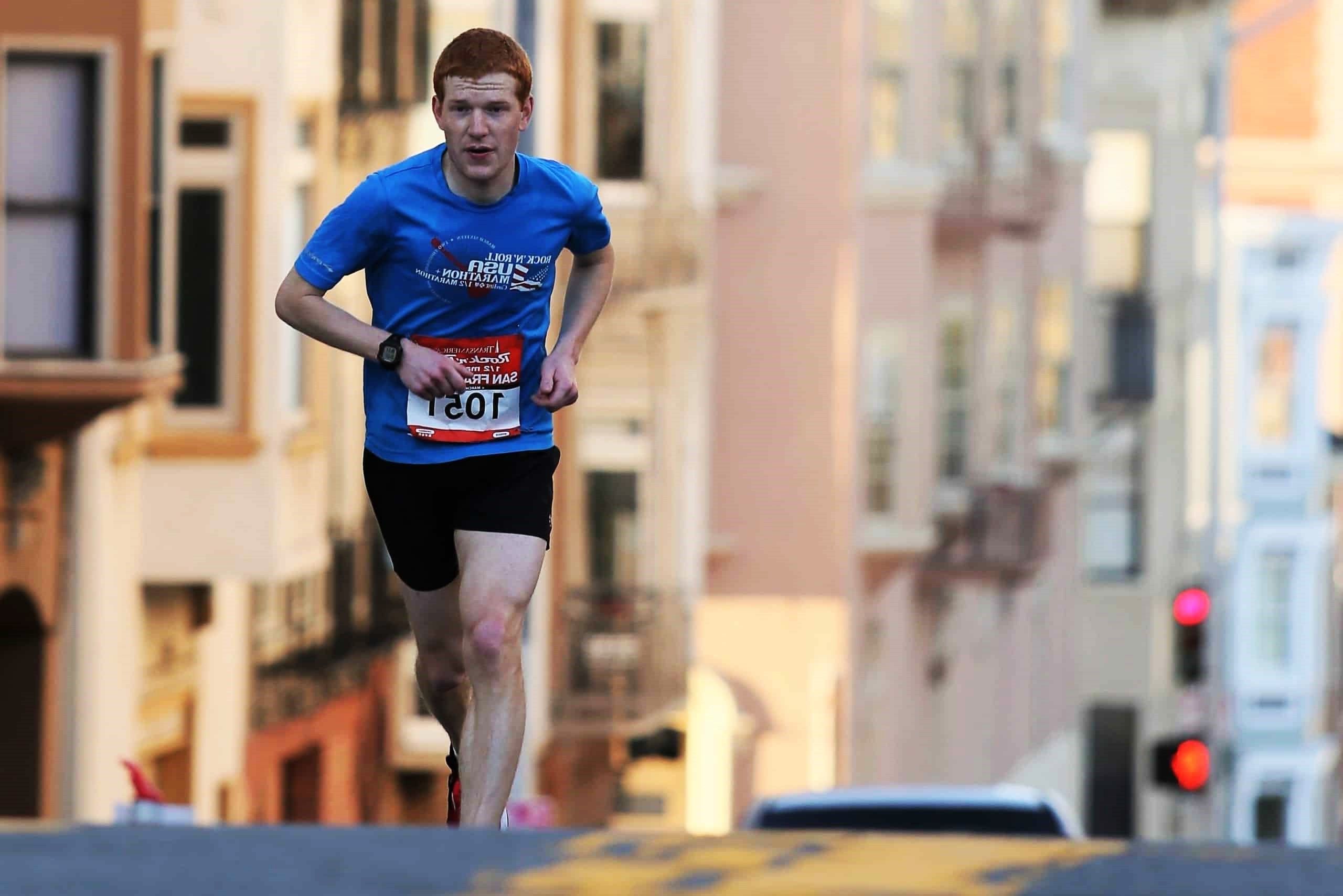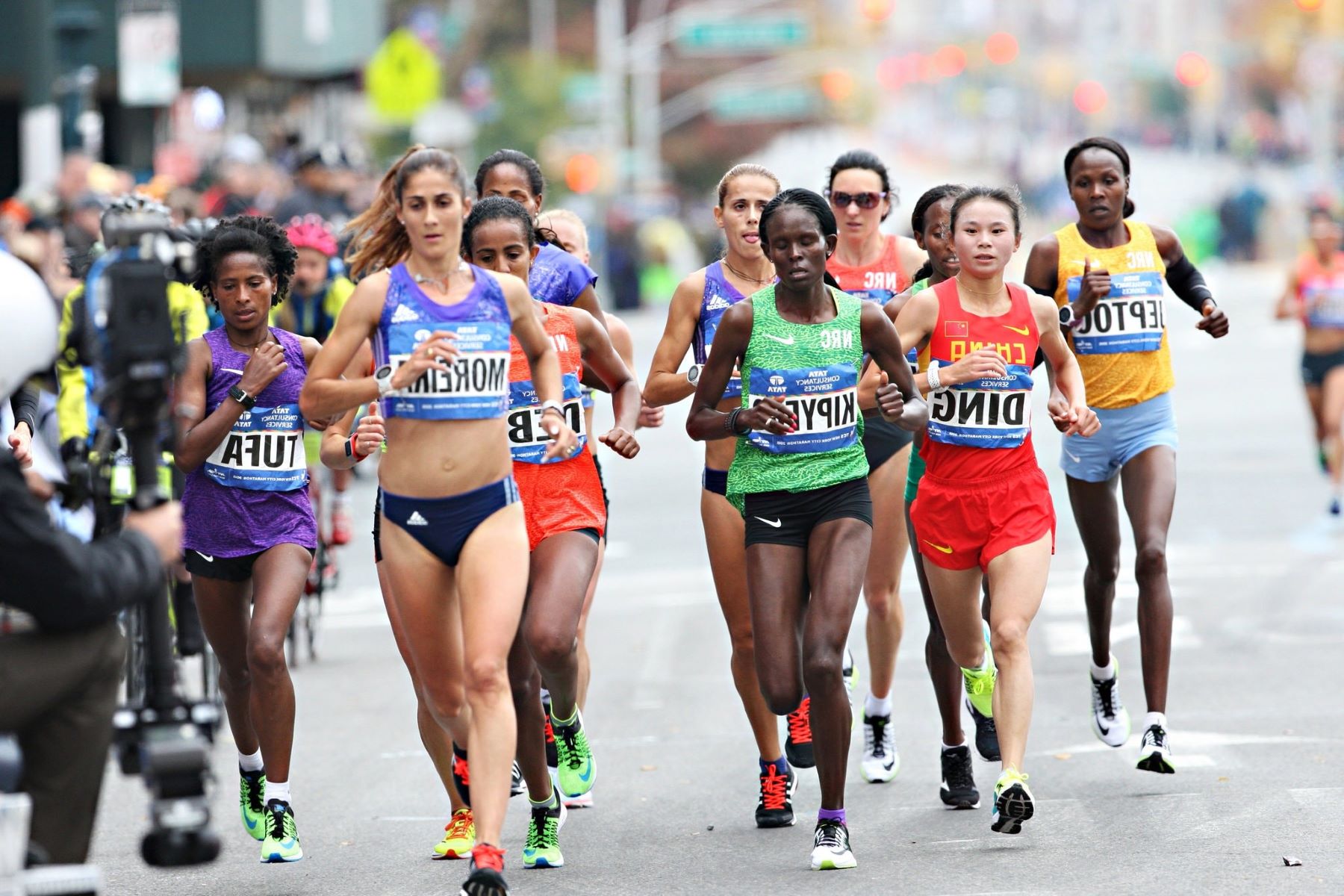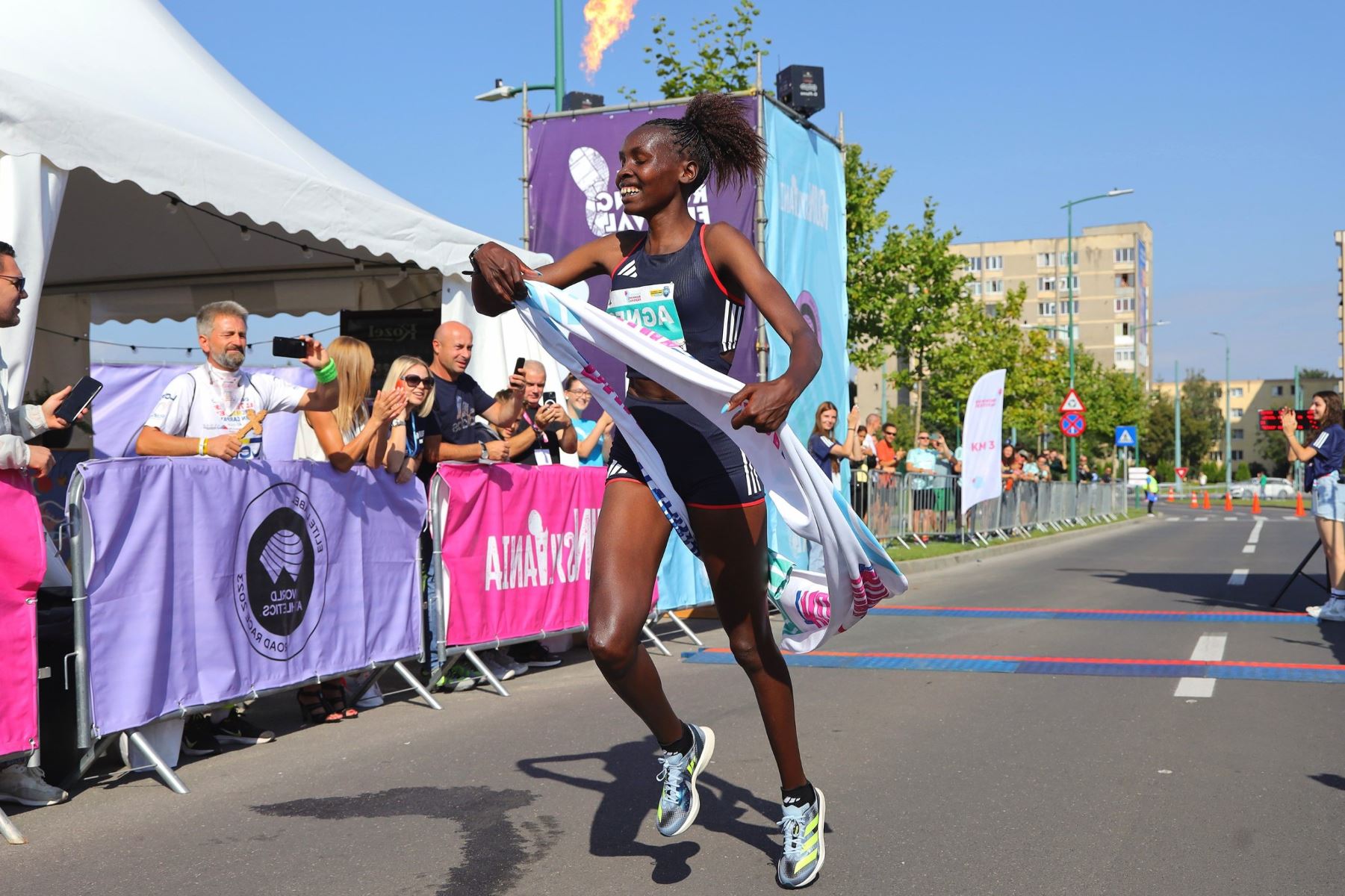Home>Training & Techniques>Training Plans>Three 10K Training Plans For Achieving Sub-60, Sub-50, And Sub-40 Minute Times


Training Plans
Three 10K Training Plans For Achieving Sub-60, Sub-50, And Sub-40 Minute Times
Published: March 2, 2024
Achieve your 10K running goals with our tailored training plans for sub-60, sub-50, and sub-40 minute times. Get expert guidance and reach your peak performance. Discover the best training plans now!
(Many of the links in this article redirect to a specific reviewed product. Your purchase of these products through affiliate links helps to generate commission for Therunningadvisor.com, at no extra cost. Learn more)
Table of Contents
Introduction
Embarking on a journey to conquer the 10K race is a thrilling and rewarding endeavor that requires dedication, perseverance, and a well-structured training plan. Whether you're a seasoned runner aiming to set a new personal record or a novice seeking to complete your first 10K race, the path to success begins with a comprehensive and tailored training regimen.
In this article, we will delve into the intricacies of 10K training, offering valuable insights and expert guidance to help you achieve your desired race time. From breaking the coveted sub-60, sub-50, and sub-40 minute barriers to optimizing your performance through strategic training plans, we will equip you with the knowledge and tools necessary to excel in the 10K distance.
As we unravel the nuances of 10K training, it's essential to recognize that each runner's journey is unique, shaped by individual fitness levels, goals, and aspirations. Whether you're aiming to cross the finish line in under 60 minutes, 50 minutes, or even 40 minutes, the principles of effective training remain constant: consistency, specificity, and gradual progression.
Throughout this article, we will explore tailored training plans designed to propel you towards your target time, taking into account the physiological demands of the 10K distance and the importance of periodization, cross-training, and recovery. By understanding the intricacies of 10K training and implementing targeted strategies, you can optimize your performance and unlock your full potential on race day.
Join us as we embark on a journey of discovery, uncovering the key components of successful 10K training and empowering you to embrace the challenge with confidence and determination. Whether you're aiming to break personal barriers, compete at a higher level, or simply revel in the joy of running, the 10K distance offers a platform for growth, achievement, and unparalleled exhilaration. Let's lace up our running shoes and embark on this transformative odyssey together.
Understanding the 10K Race
The 10K race, also known as the 10-kilometer race, holds a revered status in the realm of distance running, striking a balance between endurance and speed. Covering a distance of 6.2 miles, the 10K race presents a formidable yet attainable challenge for runners of all levels, from recreational enthusiasts to elite athletes. Understanding the nuances of this iconic distance is paramount for devising effective training plans and optimizing race-day performance.
At its core, the 10K race demands a blend of aerobic capacity, muscular endurance, and mental fortitude. Unlike shorter distances that emphasize explosive speed or longer races that prioritize sustained endurance, the 10K requires a delicate fusion of both attributes. Runners must harness their cardiovascular fitness to maintain a strong pace throughout the race while drawing upon muscular strength to withstand the rigors of the distance.
The 10K race unfolds as a test of pacing prowess, strategic decision-making, and unwavering determination. From the adrenaline-fueled start to the triumphant surge across the finish line, runners navigate a diverse landscape of physical and mental challenges. The race unfolds as a captivating journey, punctuated by the rhythmic cadence of footfalls, the pulsating rhythm of breath, and the unwavering pursuit of personal excellence.
In the realm of competitive running, the 10K race serves as a cornerstone event, attracting a diverse array of participants, from seasoned veterans to newcomers eager to test their mettle. Its allure lies in the balance it strikes – a formidable test of fitness and resilience, yet accessible enough to entice runners of varying abilities. Whether it's the thrill of chasing a new personal best, the camaraderie of running alongside fellow enthusiasts, or the sheer joy of pushing physical boundaries, the 10K race embodies the essence of athletic pursuit.
As runners immerse themselves in the 10K distance, they embrace a journey that transcends mere physical exertion. It becomes a narrative of self-discovery, perseverance, and unwavering commitment. Each step taken in training and on race day weaves a tapestry of determination, resilience, and unyielding passion. The 10K race, with its unique blend of challenges and triumphs, stands as a testament to the indomitable spirit of the running community, inspiring individuals to push beyond limits and redefine what is possible.
In the next sections, we will delve into tailored training plans designed to propel runners towards achieving sub-60, sub-50, and sub-40 minute times in the 10K race, unlocking the potential for personal growth and athletic achievement. Join us as we unravel the intricacies of 10K training, empowering you to embrace the challenge with confidence and unwavering resolve.
Training Plan for Achieving Sub-60 Minute Time
Embarking on a quest to achieve a sub-60 minute 10K time demands a meticulously crafted training plan that integrates key principles of endurance, speed, and mental resilience. This target time of sub-60 minutes translates to an average pace of approximately 9:40 per mile, requiring runners to sustain a strong and consistent rhythm throughout the 6.2-mile distance. To conquer this formidable challenge, a structured and progressive training regimen is essential.
Week 1-4: Building Aerobic Base
- Focus: Establishing a foundation of aerobic fitness to support sustained efforts.
- Training: Run 3-4 times per week at a comfortable pace, gradually increasing total weekly mileage.
- Key Workout: Long run of 5-6 miles at conversational pace to enhance endurance.
Week 5-8: Introducing Speed Work
- Focus: Integrating speed workouts to improve overall pace and running economy.
- Training: Incorporate one interval session per week, alternating between shorter, faster repeats and longer tempo runs.
- Key Workout: 6 x 400 meters at 5K pace with 2-minute recovery jogs to enhance speed and lactate threshold.
Week 9-12: Progressive Intensity
- Focus: Fine-tuning race-specific fitness and mental toughness.
- Training: Implement a combination of tempo runs, hill repeats, and race-pace simulations to acclimate the body to sustained effort.
- Key Workout: 3 x 1 mile at goal 10K pace with 3-minute recovery jogs to simulate race conditions and build confidence.
Week 13-16: Taper and Fine-Tuning
- Focus: Allowing for recovery and optimizing race readiness.
- Training: Reduce overall mileage while maintaining intensity through shorter, sharper workouts.
- Key Workout: Short, brisk intervals at faster than race pace to sharpen speed and maintain neuromuscular efficiency.
Additional Considerations
- Cross-Training: Incorporate low-impact activities such as cycling or swimming to supplement running and enhance overall fitness.
- Strength Training: Integrate targeted strength exercises to improve muscular endurance and reduce the risk of injury.
- Rest and Recovery: Prioritize adequate rest and recovery to allow for adaptation and minimize the risk of overtraining.
By adhering to this comprehensive training plan, aspiring sub-60 minute 10K runners can systematically enhance their aerobic capacity, speed, and mental fortitude, laying the groundwork for a successful race day performance. Through consistent training, strategic workouts, and a steadfast commitment to progress, the pursuit of a sub-60 minute 10K time becomes an achievable and exhilarating endeavor.
Training Plan for Achieving Sub-50 Minute Time
Embarking on the journey to achieve a sub-50 minute 10K time signifies a commitment to elevating one's running prowess to new heights. This ambitious goal, requiring an average pace of approximately 8 minutes per mile, demands a meticulously structured training plan that encompasses elements of endurance, speed, and mental resilience. By adhering to a comprehensive and progressive regimen, runners can position themselves for success in conquering the 6.2-mile distance within the coveted sub-50 minute timeframe.
Week 1-4: Establishing a Foundation
During the initial phase, the focus is on building a solid aerobic base to support the rigors of 10K training. Runners engage in 3-4 weekly runs at a comfortable pace, gradually increasing their total mileage. A key workout during this phase involves a long run of 5-6 miles at a conversational pace, aimed at enhancing endurance and laying the groundwork for subsequent intensity.
Week 5-8: Introducing Speed Work
As the training progresses, the incorporation of speed workouts becomes pivotal in enhancing overall pace and running economy. Runners integrate one interval session per week, alternating between shorter, faster repeats and longer tempo runs. A key workout during this phase may involve 6 x 400 meters at 5K pace with 2-minute recovery jogs, aimed at improving speed and lactate threshold.
Week 9-12: Fine-Tuning Race-Specific Fitness
The focus shifts towards fine-tuning race-specific fitness and mental toughness. A combination of tempo runs, hill repeats, and race-pace simulations are implemented to acclimate the body to sustained effort. A key workout during this phase may entail 3 x 1 mile at goal 10K pace with 3-minute recovery jogs, simulating race conditions and instilling confidence in the runner's ability to maintain the desired pace.
Week 13-16: Taper and Peak Performance
In the final phase, the emphasis lies on tapering and fine-tuning, allowing for recovery and optimizing race readiness. Overall mileage is reduced while maintaining intensity through shorter, sharper workouts. Key workouts during this phase may involve short, brisk intervals at faster than race pace to sharpen speed and maintain neuromuscular efficiency.
Additional Considerations
In addition to the structured running plan, cross-training activities such as cycling or swimming can be incorporated to supplement running and enhance overall fitness. Furthermore, integrating targeted strength exercises and prioritizing adequate rest and recovery are essential components of the training plan, aimed at improving muscular endurance, reducing the risk of injury, and allowing for adaptation.
By diligently following this comprehensive training plan, aspiring sub-50 minute 10K runners can systematically enhance their aerobic capacity, speed, and mental fortitude, positioning themselves for a triumphant performance on race day. Through consistent training, strategic workouts, and unwavering dedication to progress, the pursuit of a sub-50 minute 10K time becomes an attainable and exhilarating endeavor.
Training Plan for Achieving Sub-40 Minute Time
Embarking on the quest to achieve a sub-40 minute 10K time represents a formidable yet exhilarating challenge, signifying a commitment to pushing the boundaries of speed, endurance, and mental fortitude. With an average pace of approximately 6:26 per mile, this ambitious goal demands a meticulously structured training plan that integrates elements of aerobic capacity, speed development, and race-specific preparation. By adhering to a comprehensive and progressive regimen, runners can position themselves for success in conquering the 6.2-mile distance within the coveted sub-40 minute timeframe.
Week 1-4: Building Aerobic Foundation
During the initial phase, the focus is on establishing a solid aerobic base to support the rigors of 10K training. Runners engage in 4-5 weekly runs at a comfortable pace, gradually increasing their total mileage. A key workout during this phase involves a long run of 6-7 miles at a conversational pace, aimed at enhancing endurance and laying the groundwork for subsequent intensity.
Week 5-8: Introducing Speed Work
As the training progresses, the incorporation of speed workouts becomes pivotal in enhancing overall pace and running economy. Runners integrate one interval session per week, alternating between shorter, faster repeats and longer tempo runs. A key workout during this phase may involve 8 x 400 meters at 5K pace with 90-second recovery jogs, aimed at improving speed, lactate threshold, and mental resilience.
Week 9-12: Progressive Intensity
The focus shifts towards fine-tuning race-specific fitness and mental toughness. A combination of tempo runs, hill repeats, and race-pace simulations are implemented to acclimate the body to sustained effort. A key workout during this phase may entail 4 x 1 mile at goal 10K pace with 2-minute recovery jogs, simulating race conditions and instilling confidence in the runner's ability to maintain the desired pace.
Week 13-16: Taper and Peak Performance
In the final phase, the emphasis lies on tapering and fine-tuning, allowing for recovery and optimizing race readiness. Overall mileage is reduced while maintaining intensity through shorter, sharper workouts. Key workouts during this phase may involve short, brisk intervals at faster than race pace to sharpen speed and maintain neuromuscular efficiency.
Additional Considerations
In addition to the structured running plan, cross-training activities such as cycling or swimming can be incorporated to supplement running and enhance overall fitness. Furthermore, integrating targeted strength exercises and prioritizing adequate rest and recovery are essential components of the training plan, aimed at improving muscular endurance, reducing the risk of injury, and allowing for adaptation.
By diligently following this comprehensive training plan, aspiring sub-40 minute 10K runners can systematically enhance their aerobic capacity, speed, and mental fortitude, positioning themselves for a triumphant performance on race day. Through consistent training, strategic workouts, and unwavering dedication to progress, the pursuit of a sub-40 minute 10K time becomes an attainable and exhilarating endeavor.
Tips for Success in 10K Training
Achieving success in 10K training extends beyond the realm of structured workouts and mileage accumulation. It encompasses a holistic approach that integrates physical preparation, mental fortitude, and strategic planning. Whether you're aiming to conquer the 10K distance for the first time or striving to set a new personal record, the following tips are instrumental in optimizing your training and maximizing your performance on race day.
1. Consistency is Key
Consistent training forms the bedrock of 10K preparation. By adhering to a regular training schedule and gradually increasing your mileage and intensity, you allow your body to adapt and grow stronger. Consistency fosters physiological adaptations, enhances aerobic capacity, and instills the discipline necessary for long-term success.
2. Embrace Variety
Incorporate a diverse array of workouts into your training regimen, including long runs, speed intervals, tempo runs, and hill repeats. Embracing variety not only prevents monotony but also stimulates different energy systems, improves running economy, and hones your ability to handle varied race conditions.
3. Prioritize Recovery
Amidst the rigors of training, adequate rest and recovery are paramount. Listen to your body, prioritize quality sleep, and integrate rest days into your schedule. Recovery allows for adaptation, reduces the risk of injury, and ensures that you approach each workout feeling refreshed and rejuvenated.
4. Set Realistic Goals
Establishing clear and attainable goals is crucial for maintaining motivation and tracking progress. Whether it's aiming for a specific race time, increasing weekly mileage, or conquering challenging workouts, setting realistic targets allows you to gauge your improvement and celebrate milestones along the way.
5. Fuel Your Body
Nutrition plays a pivotal role in 10K training. Fuel your body with a balanced diet rich in carbohydrates, lean proteins, healthy fats, and essential vitamins and minerals. Hydration is equally vital, so ensure that you maintain optimal fluid intake to support performance and aid in recovery.
6. Mental Preparation
Training the mind is as vital as training the body. Cultivate mental resilience through visualization, positive self-talk, and the development of race strategies. Embrace the inevitable discomfort of intense workouts as an opportunity for mental fortitude, preparing yourself to push through challenges on race day.
7. Listen to Your Body
Pay attention to signals from your body, including fatigue, soreness, and any signs of potential injury. Address any discomfort promptly, and don't hesitate to modify your training plan or seek professional guidance if needed. Prioritizing your well-being is essential for sustained progress and long-term enjoyment of running.
8. Enjoy the Journey
Amidst the pursuit of ambitious goals, remember to savor the journey. Embrace the camaraderie of fellow runners, revel in the beauty of your surroundings during training runs, and celebrate the small victories that pave the way for significant achievements. Running is not just about reaching the finish line; it's about the experiences and growth encountered along the way.
By integrating these tips into your 10K training journey, you can elevate your preparation, fortify your mindset, and position yourself for a fulfilling and successful race day experience. Embrace the challenge, stay committed to your goals, and revel in the transformative power of 10K training.
Conclusion
As we draw the curtains on our exploration of 10K training, it becomes evident that the pursuit of excellence in the 10K distance transcends mere physical exertion. It embodies a narrative of resilience, determination, and unwavering commitment, weaving a tapestry of personal growth and athletic achievement. Whether aspiring to break the sub-60, sub-50, or sub-40 minute barriers, each runner's journey is a testament to the indomitable spirit of the running community.
The tailored training plans unveiled in this article serve as roadmaps to success, guiding runners through a progressive and strategic approach to 10K preparation. From building a robust aerobic foundation to fine-tuning race-specific fitness, each phase of the training plan is designed to optimize performance and instill confidence in the pursuit of ambitious time goals.
Furthermore, the tips for success in 10K training underscore the holistic nature of preparation, emphasizing the significance of consistency, variety, recovery, realistic goal-setting, nutrition, mental fortitude, attentive self-care, and the joy inherent in the journey. By embracing these principles, runners can elevate their training experience, fortify their mindset, and position themselves for a triumphant performance on race day.
As runners lace up their shoes and embark on the transformative odyssey of 10K training, they become part of a vibrant tapestry of individuals united by a shared passion for running. Each step taken in training is a testament to unwavering dedication, each milestone achieved a celebration of progress, and each race conquered a triumph of the human spirit.
In the grand tapestry of 10K training, every runner's story unfolds as a testament to the power of perseverance, the allure of self-discovery, and the unyielding pursuit of personal excellence. Whether crossing the finish line in under 60, 50, or 40 minutes, each achievement is a testament to the indomitable spirit that propels runners to push beyond limits and redefine what is possible.
As we bid adieu to this exploration of 10K training, let us carry forward the lessons learned, the insights gained, and the unwavering determination that fuels our pursuit of greatness. The 10K distance beckons, offering a platform for growth, a canvas for self-expression, and a stage for the relentless pursuit of personal bests. Let us embrace the challenge, revel in the camaraderie of fellow runners, and continue to inscribe our stories of triumph and perseverance on the vibrant tapestry of 10K racing.

